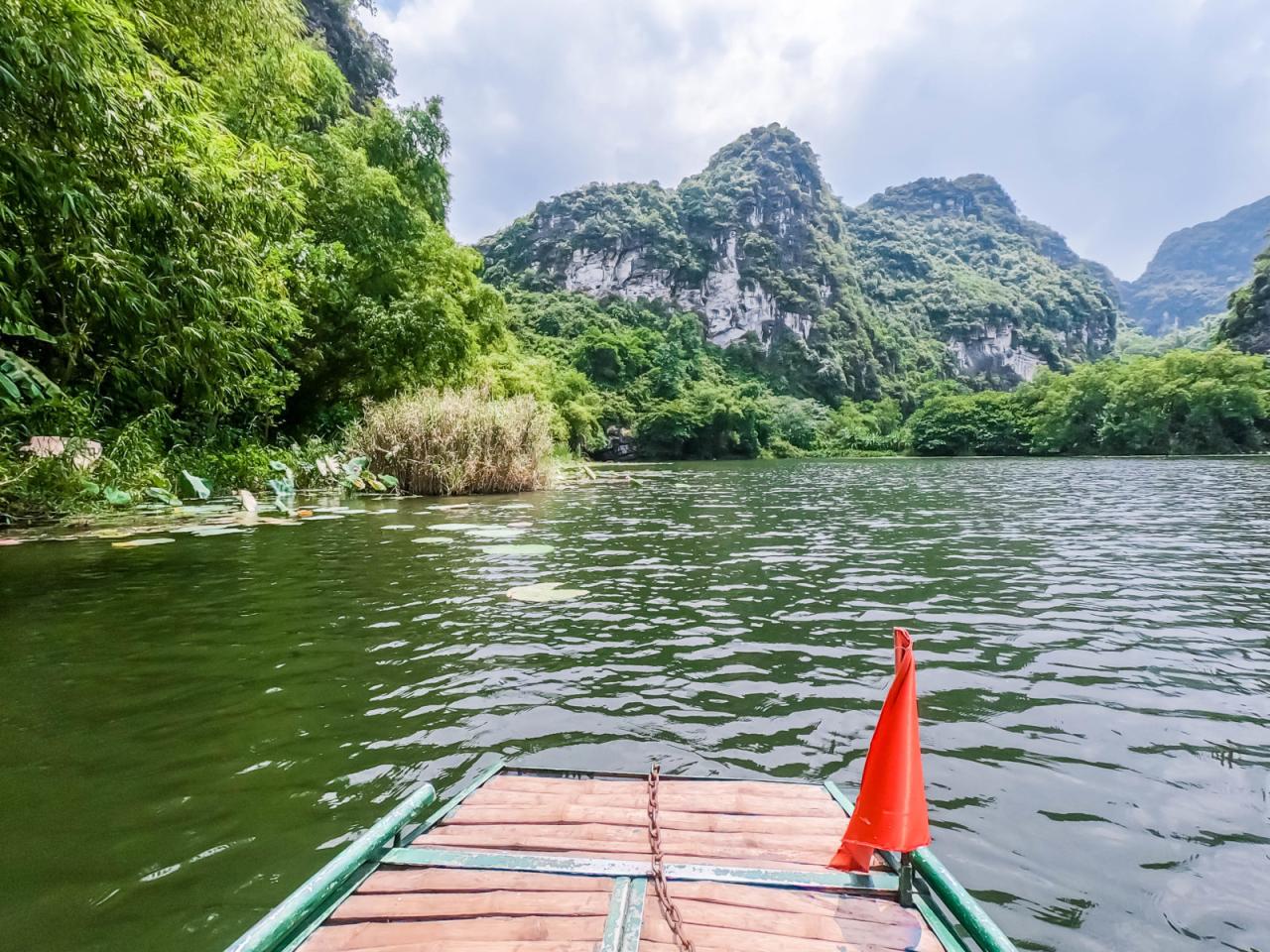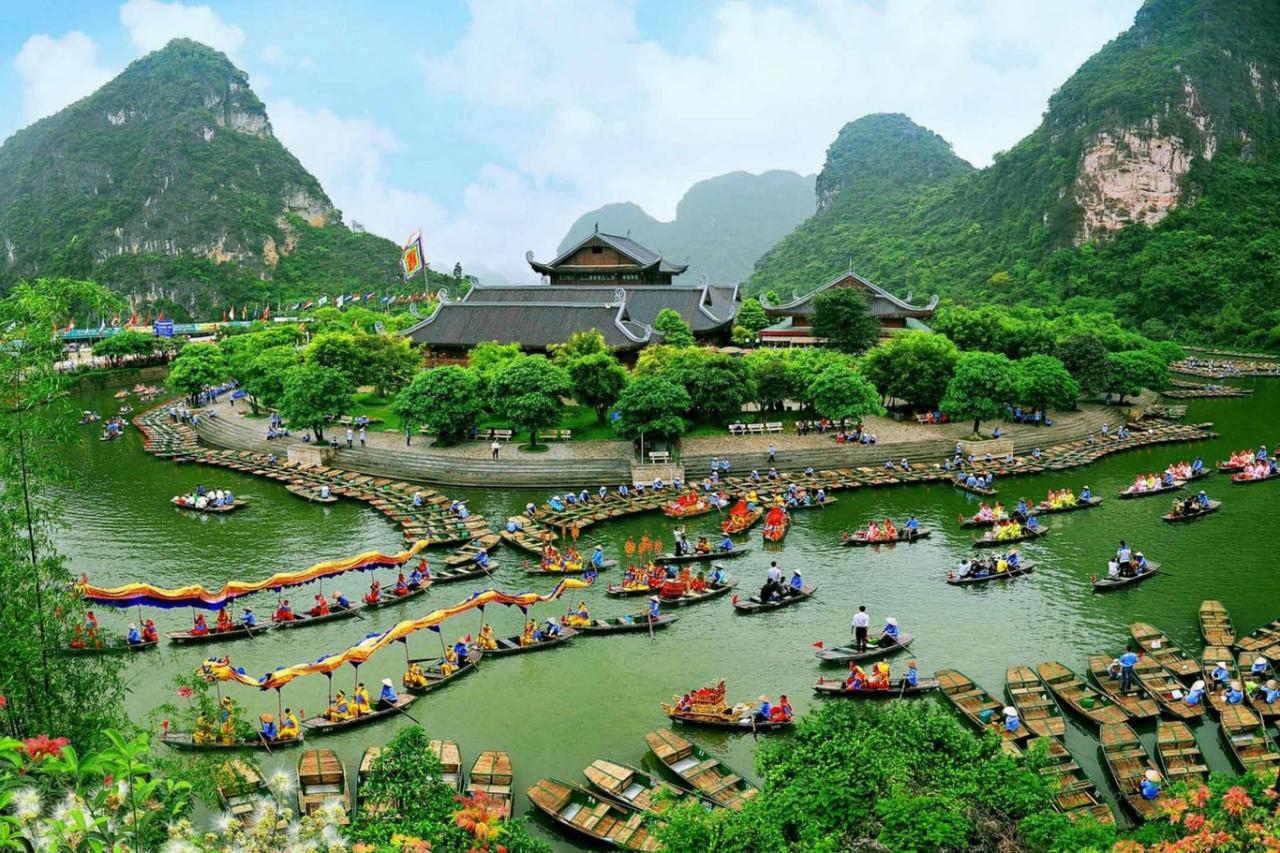Natural Beauty and Landscape
Trang an eco tourism – Trang An’s allure lies in its captivating natural beauty, a harmonious blend of towering limestone karsts and pristine waters. This extraordinary landscape, shaped over millions of years by the relentless forces of nature, has resulted in a unique and breathtaking ecosystem.
Trang An Eco Tourism beckons nature enthusiasts with its pristine landscapes and rich biodiversity. This sanctuary for wildlife invites visitors to delve into the intricate tapestry of wildlife and ecotourism . The harmonious coexistence of diverse species within Trang An’s verdant embrace underscores the vital role of conservation in preserving our planet’s natural wonders.
The karst formations, with their sheer cliffs and hidden grottoes, rise majestically from the tranquil waters, creating a surreal and enchanting ambiance. These limestone behemoths, sculpted by time and water, showcase a myriad of intricate shapes and sizes, from towering pinnacles to enigmatic arches.
Flora and Fauna
The diverse flora and fauna of Trang An further enrich its natural tapestry. The area is home to a wide variety of plant species, including lush tropical rainforests, verdant rice paddies, and vibrant wildflowers. These habitats support a rich array of wildlife, including exotic birds, playful monkeys, and elusive reptiles.
The waters of Trang An teem with life, hosting a myriad of fish species, graceful water birds, and even the occasional crocodile. The harmonious coexistence of these diverse species underscores the ecological significance of this pristine environment.
Significance of Natural Beauty
Trang An’s natural beauty is not merely a spectacle for the eyes but also a vital asset for tourism. The stunning scenery, coupled with the area’s rich cultural heritage, has made it a popular destination for both domestic and international travelers.
The stunning landscapes of Trang An Eco-Tourism Complex invite us to immerse ourselves in the beauty of nature. Amidst its tranquil waters and towering limestone karsts, ecotourism practices strive to preserve this pristine environment. As we explore the complex, we become stewards of conservation, embracing the principles of ecotourism for conservation . By supporting responsible tourism practices, we not only safeguard the delicate ecosystem of Trang An but also create a legacy for generations to come, ensuring that its natural wonders continue to inspire and enchant.
The tourism industry, in turn, has contributed to the local economy and raised awareness about the importance of preserving this natural treasure. As visitors marvel at the wonders of Trang An, they become advocates for its conservation, ensuring that its beauty and ecological integrity will be preserved for generations to come.
Cultural Heritage and Historical Significance

Nestled in the heart of Vietnam, the Trang An region is not only a natural wonder but also a treasure trove of cultural heritage and historical significance. Throughout the centuries, the area has played a pivotal role in Vietnamese history, leaving behind a rich legacy of ancient temples, pagodas, and cultural traditions that continue to thrive today.
Religious Significance
Trang An has long been a pilgrimage site for Vietnamese Buddhists and Taoists. The region is home to several ancient temples and pagodas, including the Bai Dinh Pagoda, one of the largest Buddhist temples in Southeast Asia. These sacred sites attract thousands of pilgrims each year, who come to pay homage to Buddha and other deities and to seek blessings for their families and loved ones.
Historical Importance
The Trang An region has played a significant role in Vietnamese history. During the 10th century, it was the capital of the Dinh Dynasty, one of the first independent Vietnamese dynasties. Later, during the 13th century, the region was a major battleground in the Mongol invasions of Vietnam.
The area’s strategic location and natural defenses made it a key point of contention between the Vietnamese and the Mongols.
Cultural Traditions
The Trang An region is home to a vibrant and diverse culture. The local people have preserved many traditional practices and beliefs, including traditional music, dance, and handicrafts. One of the most popular cultural traditions is the “hat xam,” a form of folk singing that is often performed at festivals and other special occasions.
Preservation and Celebration, Trang an eco tourism
The cultural heritage of Trang An is a source of great pride for the local people. The government and local communities have made significant efforts to preserve and celebrate the region’s unique cultural traditions. Many of the ancient temples and pagodas have been restored and renovated, and traditional festivals and ceremonies are held throughout the year.
Sustainable Tourism Practices: Trang An Eco Tourism

Trang An is committed to sustainable tourism, which aims to balance the economic benefits of tourism with the preservation of the environment and the well-being of local communities. The principles of sustainable tourism are implemented through various initiatives and practices.
Local businesses and organizations have adopted eco-friendly practices to minimize their environmental impact. Many hotels and restaurants use energy-efficient appliances and lighting, and recycle waste. Tour operators use electric or hybrid boats to reduce emissions, and encourage visitors to engage in responsible practices such as staying on designated trails and respecting wildlife.
Balancing Tourism Development and Environmental Conservation
Balancing tourism development with environmental conservation is crucial in Trang An. The local authorities have implemented strict regulations to protect the natural and cultural heritage of the area. Construction is limited to designated zones, and the use of heavy machinery is prohibited in sensitive areas.
Moreover, community-based tourism initiatives empower local people to participate in tourism development and ensure that the benefits are shared equitably.
